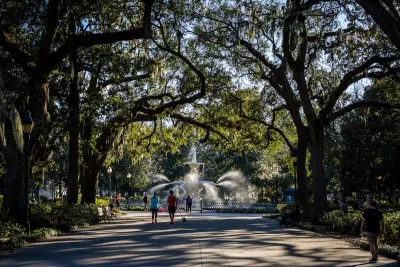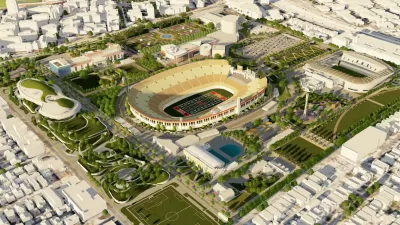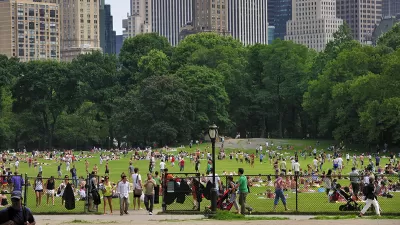A lack of funding prevents many U.S. parks and public spaces from playing a more significant role in helping residents meet daily needs.

A survey from Project for Public Spaces asked respondents to describe how they feel about their local public spaces and what amenities could make them better and more welcoming.
According to a Smart Cities Dive article by Rachel H. Pollack, the survey reveals that only 5 percent of respondents feel that public spaces are fully meeting community needs or letting residents easily and equitably “go outside, connect with neighbors and families and meet daily needs.” Respondents, some of whom were professionals from city planning and civic engineering, cited funding as a key factor impacting U.S. public space development and maintenance.
Interventions that improve public space can cater to the specific needs of each city, such as regional extreme weather events. “Cities can introduce new trees and awnings in public spaces to increase shade and combat rising temperatures, as in Phoenix, helping people better enjoy them. And they can design rain gardens and other green infrastructure in public spaces to help mitigate the effects of flooding, as New York City has done.”
FULL STORY: Public spaces could better meet community needs: survey

Trump Administration Could Effectively End Housing Voucher Program
Federal officials are eyeing major cuts to the Section 8 program that helps millions of low-income households pay rent.

Planetizen Federal Action Tracker
A weekly monitor of how Trump’s orders and actions are impacting planners and planning in America.

Ken Jennings Launches Transit Web Series
The Jeopardy champ wants you to ride public transit.

Philadelphia Is Expanding its Network of Roundabouts
Roundabouts are widely shown to decrease traffic speed, reduce congestion, and improve efficiency.

Why Bike Lanes Are Good: An Explainer for the US Transportation Secretary
Sean Duffy says there’s no evidence that bike lanes have benefits. Streetsblog — and federal agencies’ own data — beg to differ.

California Invests Additional $5M in Electric School Buses
The state wants to electrify all of its school bus fleets by 2035.
Urban Design for Planners 1: Software Tools
This six-course series explores essential urban design concepts using open source software and equips planners with the tools they need to participate fully in the urban design process.
Planning for Universal Design
Learn the tools for implementing Universal Design in planning regulations.
Ada County Highway District
Clanton & Associates, Inc.
Jessamine County Fiscal Court
Institute for Housing and Urban Development Studies (IHS)
City of Grandview
Harvard GSD Executive Education
Toledo-Lucas County Plan Commissions
Salt Lake City
NYU Wagner Graduate School of Public Service





























